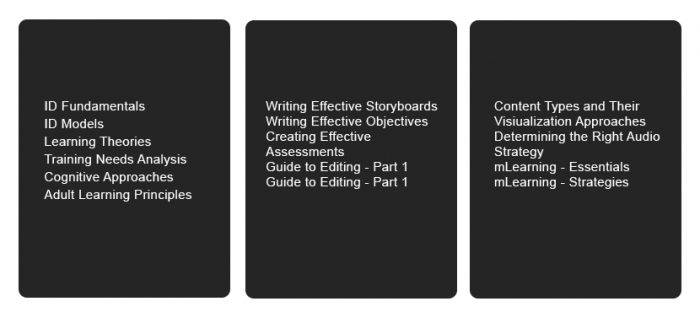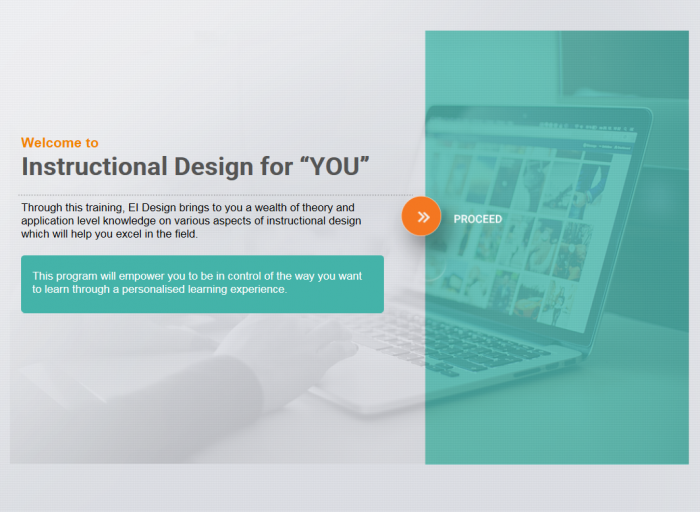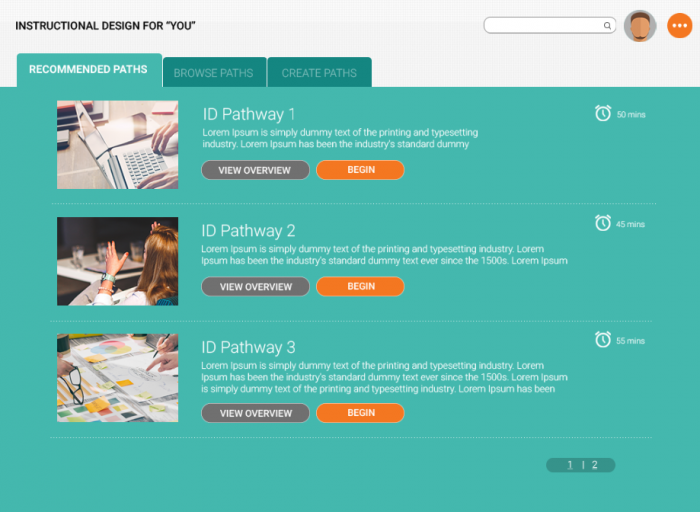
The Impact And Benefits Of Personalized eLearning
Personalized eLearning is customization of eLearning so that it can meet the specific needs of learners.
While the concept of personalization of learning is not new and has been in existence since the 1960s, its adaptation for online training or eLearning is a recent phenomenon. The concept continues to evolve and there is no single definition that is widely accepted. I feel that the United States National Education Technology Plan 2017 defines personalized learning effectively:
“Personalized learning refers to instruction in which the pace of learning and the instructional approach are optimized for the needs of each learner. Learning objectives, instructional approaches, and instructional content (and its sequencing) may all vary based on learner needs.In addition, learning activities are meaningful and relevant to learners, driven by their interests, and often self-initiated.”
What Are The Techniques That Can Be Used To Create Personalized eLearning?
Personalization of eLearning is typically done in the following ways:
- You could begin the eLearning course by personalization through an avatar-based selection. This could then be followed by customized elements, like themes, fonts, backgrounds, and so on.
- Another way to offer customized eLearning is through customization of the format of content deliveryto suit varied learning styles. For instance, options to use audio/video, or otherwise, bring in changes in the degree of interactions, and so on.
- The highest degree of customization is at the learning path level that is personalized for each learner through pre-assessments or surveys. For instance,
- A pre-assessment can help us understand the baseline proficiency, and the learner can be given a personalized learning track that corresponds to the competency gaps.
- Alternatively, we can use a survey to assess where the learners’ interests lie and then offer a personalized set of recommendations on how to “consume” this module (that is, which parts could be skipped and which should be taken with special attention).
What Are The Approaches That Can Effectively Personalize eLearning?
As I have highlighted, personalized eLearning can be crafted through a variety of measures that can help us customize the learning experience for each learner.
The 2 approaches that are useful in creating an effective personalization are:
Approach 1
Adaptive learning: This approach uses techniques like pre-assessment to offer customized feedback and a specific path to each learner. The advantage of this approach is its ability to match the varied learning proficiencies of learners to the most relevant learning path.
Today, microlearning techniques can be used to provide tremendous granularity to break down the primary eLearning course and offer highly customized or personalized learning paths.
Approach 2
Control to the learner: In this approach, rather than taking control through a pre-assessment, we empower the learner to create their own customized learning path (based on their interests and their own assessment of their proficiency). This approach is increasingly gaining popularity on account of its learner-centricity.
We can integrate checks and balances through assessments to redirect the learners, so that while they get the flexibility, they do not skip the sections they may not be good at.
What Are The Benefits Of Personalized eLearning For The Learners And The Organization?
Instead of a “one size fits all” approach, personalized eLearning uses various approaches to engage the learner more meaningfully, and helps them set and achieve their specific learning goals.
This is not all; personalized eLearning also enables learners to set their own learning paths and gain exactly what they need.
Learners’ perspective: As I have highlighted, personalized eLearning empowers the learners and offers them control through the following measures that allow them to:
- Set their own goals.
- Set manageable milestones.
- Select their own learning path.
- Select the device they wish to learn on.
- Learn at their own pace.
- Select the kind of interaction levels they feel is relevant for them.
- Get personalized feedback and use it to assess their progress.
- Use the offered recommendations to enrich the learning path.
Organizational perspective: Personalized eLearning provides the following key benefits:
- You can use the personalized eLearning approach to promote a culture of learning as a continuum.
- You will see better learner commitment and higher completion rates.
What Are The Approaches To Offer Personalized Learning?
At EI, over the last two years, we have been adding approaches that focus on crafting learning designs to offer control to learners. Essentially, we want to create learning experiences wherein learners can “pull” what they want rather than be “pushed” into a prescriptive learning journey. The personalization of eLearning is a significant part of this practice.
We have created various approaches to offer personalized eLearning, which map to 4 levels, ranging from simple personalization techniques, including Avatar selection, custom themes, and so on, to highly customized learning paths that offer learners the control to choose the learning interactions that match their interest and learning styles.
Let me share a case study that uses several of these personalization techniques in a training course intended for newly joined Instructional Designers in our team.
- With personalization, we are now able to scale the usage of our existing training courses to ongoing learning (learning as a continuum).
- For the learners, personalization provides them the required control to decide on the most effective approach to learn and come back for enrichment.
Case Study
Here’s a short video that showcases a case study on using personalization techniques in a corporate training course to double the impact of learning.
Additionally, I am sharing the highlights of our approach to personalize eLearning.
Before – The Traditional eLearning Approach
Designed to induct and onboard newly joined Instructional Designers into our team at EI, we had created a suite of 15 courses. Although, our audience comprised team members with different profiles, the approach mandated that all Instructional Designers needed to go through all the courses. Goes without saying, the approach used the classical “push” model to train rather than enabling the learners to “pull” what they need.
After – The Personalized eLearning Approach
Using the personalized eLearning approach, we give the control to the learners (new Instructional Designers onboarding with us) who can now craft their own learning path, based on their proficiency.
Highlights Of The Personalized eLearning Approach
- Create learner-centered goals and objectives.
- Assess online learners to identify knowledge gaps.
- Offer timely, personalized eLearning feedback.
- Provide constant online support.
Features Of The Personalized eLearning Approach At A Glance
- Avatar selection/Role selection.
- Pre-assessment on topics covered.
- Range of educational pathways.
- Personalized recommendations/feedback.
- Re-directs learners for remediation and for good performance.
- Provides resources for further exploration of knowledge.
- Learners are informed and empowered.
- Assessments are related to meaningful tasks.
- Reduces the achievement gap.
- Enhanced interaction between individual learners and individual teachers.
- Facilitates the “community of learning” approach.
- Instead of incorporating a linear navigation map, it offers online learners a clickable guide that features diverse eLearning activities and multimedia.
The Impact
Learners’ perspective: They are fully empowered to design their own personal learning path that works best for them.
Organizational perspective: We can validate their current proficiency and provide support (remediation) as well as personalized feedback. Additional learning resources equip the learners to match the proficiency level that our organization requires. The approach also fosters a strong collaboration (between the peers and with senior managers).
Gains of the personalized eLearning approach for the learners:
- Let online learners choose their own eLearning activities and multimedia.
- Set manageable milestones.
- Incorporate online resource libraries for asynchronous eLearning.
I hope this article helps you understand the benefits a personalized eLearning approach can bring. The case study shows you the impact it can create.
Do revaluate which of your programs would gain significantly from this approach. You can contact me at apandey@eidesign.net for further queries/specific support.
Read More






